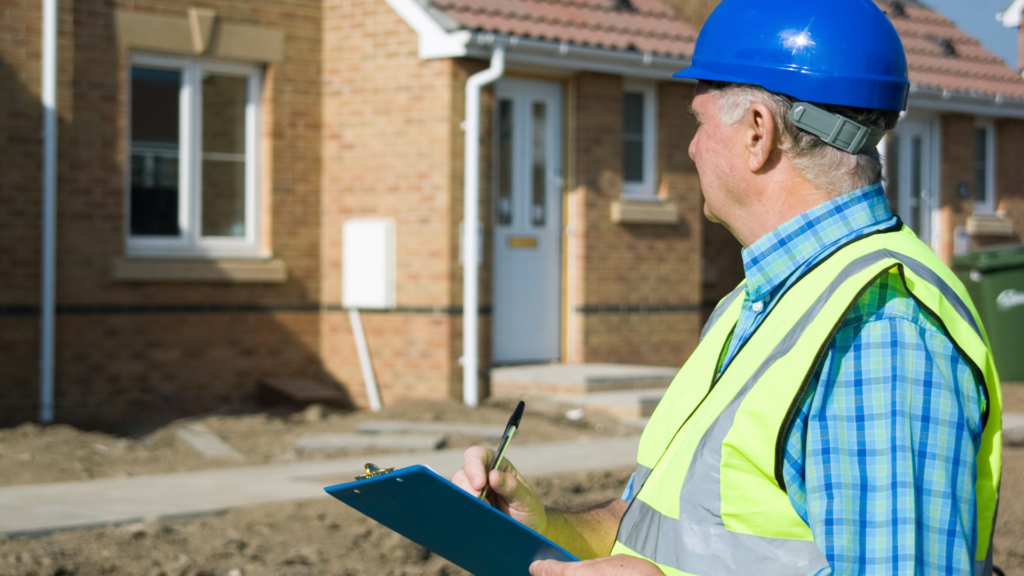Should You Buy a House with a Flat Roof? Mortgage Guide

Are you thinking about buying a flat roof home?
Flat roof homes have a special appeal—and they’re often easier on the budget too.
Plus, they come with some great perks.
You get to use all of your space—no sloping ceilings making rooms awkward. They also have a stylish, modern look that’s very popular right now.
And who wouldn’t love a rooftop garden? You could have your own little green space right above you.
But, like any home, a flat roof property has its challenges.
The biggest one? Getting a mortgage.
Lenders can be a bit fussy about flat roofs, but we’re here to help you understand why and what you can do about it.
In this guide, we’ll explain everything you need to know about mortgages for flat roof homes. By the end, you’ll have a better idea if this type of home is right for you.
Let’s get started!
What Is a Flat Roof House?
A flat roof house is, as the name suggests, a house with a roof that’s almost flat, rather than sloped. It’s not completely flat—there’s usually a slight angle to let rainwater run off—but it’s much less steep than the typical UK rooftops.
These roofs are often found on extensions, garage conversions, or full houses that stand out from the traditional style.
Flat roof houses are usually cheaper to build, which makes them attractive if you want more space without spending too much. Sounds good, right? Well, it can be… if you’re ready for the quirks that come with it.
Should I Buy a House with a Flat Roof?
You might have noticed that these houses often have a lower asking price compared to their pitched-roof counterparts.
Great news! But before you make an offer, it’s important to know what you’re getting into.
Flat roof houses can be a bit of a mixed bag. On the plus side, you get extra space (no awkward sloping ceilings) and maybe even a rooftop area you could turn into a garden or terrace—perfect for some fresh air.
But these roofs do have their issues, and some of them can make getting a mortgage harder.
One of the biggest challenges with flat roof houses in the UK is the weather. Let’s be honest, we don’t get endless sunshine—it’s mostly rain.
This makes water pooling on a flat roof a real problem. Water doesn’t drain as easily, and when it sits there too long, it can cause leaks, mould, and expensive repairs. Not exactly what you want!
Why Are Flat Roof Mortgages So Hard to Get?
If you’ve been looking at mortgage options, you might have found that lenders aren’t always keen on approving flat roof mortgages. The reason is that lenders like to play it safe.
Flat roof properties are considered “non-standard construction.” This means they’re different from the usual brick walls and sloped tile roofs that lenders are used to.
And anything different often means more risk for a bank.
Flat roofs are more likely to have issues like leaks, poor insulation, and a shorter lifespan compared to traditional roofs—all of which can lower the property’s value and make it harder to sell. Lenders don’t want that, and neither do you.
Because of these risks, lenders can be cautious. They might ask for a higher deposit, charge higher interest rates, or even refuse your application. But don’t worry—it’s not all bad news.
How Can I Get a Flat Roof Mortgage?
So, what can you do if you really want a flat roof house in the UK? This is where a specialist broker can help.
If you’re struggling to find a lender who’ll approve your mortgage, an experienced broker can be your secret weapon.
These brokers know which lenders are more likely to approve a flat roof mortgage, and they can save you a lot of time and effort.
No more calling every lender just to be told “no” again and again.
A good broker will know exactly where to go and will guide you through the whole process—from getting a reasonable rate to making sure you have the right insurance.
If you’re worried about finding the right lender, working with a broker is definitely worth considering.

Eligibility Criteria for Flat Roof Mortgages
Lenders can be a bit picky about flat roofs. They see them as a bit different, so they want to make sure you’re prepared for any challenges they might bring.
Here are the main criteria you’ll need to meet:
- Higher Deposit – Many lenders will ask for a larger deposit, often around 20-25%, to offset the higher risk involved with a flat roof property.
- Good Credit History– A solid credit score is essential. Because of the extra risks, lenders are less likely to approve applicants with poor credit.
- Income and Affordability – You’ll need to show that you have a stable income and can comfortably afford the repayments, as flat roof properties may require more maintenance, and lenders want assurance that you can handle these costs.
- Roof Condition – Lenders often require a roof inspection. The roof needs to be in good condition, and you might need a recent survey that shows there are no existing issues like leaks or structural problems.
- Insurance Requirements – Lenders will want you to have the right insurance in place. For flat roof homes, this often means specialist insurance that covers the extra risks associated with this type of roof.
Meeting these criteria can improve your chances of getting approved for a flat roof mortgage.
The Pros and Cons of Flat Roof Houses
Let’s look at the advantages and disadvantages of flat roof houses.
Pros:
- Cheaper to Build: Flat roofs are usually cheaper and quicker to build compared to pitched roofs.
- Easier Access: Need to clean the gutters or get a roofer up there? Flat roofs are much easier to access.
- More Space: You get more headroom without sloping ceilings taking up space.
Cons:
- More Maintenance: Flat roofs don’t drain water as well as pitched ones, which means you’re more likely to deal with leaks, mould, or pooling water.
- Shorter Lifespan: They don’t last as long as pitched roofs, so you might need repairs or replacement sooner.
- Mortgage Challenges: Flat roof mortgages can be harder to get, which means fewer lender options and possibly higher rates.
The decision really depends on how much risk you’re willing to take and how much you love the property.
If you’re okay with the potential downsides, then go for it. Just make sure you’ve done your research first.
Tips for Buying a Flat Roof House
If you’re still thinking about buying a house with a flat roof, there are a few things you should do to make sure you’re making a smart decision:
- Get a Proper Survey – Don’t skip the survey! With flat roofs, it’s really important to get a professional opinion. Go for a Level 2 Homebuyers Survey or, if you want to be extra careful, a Level 3 Building Survey.
- Check the Roof’s Condition – Ask questions like, “When was the roof last replaced?” and “Has it been regularly maintained?” A well-looked-after flat roof is a lot less likely to cause headaches.
- Look for Guarantees – Sometimes, flat roofs come with guarantees—for example, if the roof is clad in materials like copper or zinc, there might be a guarantee on it. This can be really helpful for both getting a mortgage and giving you peace of mind.
- Plan for Maintenance – Budget for maintenance costs. Even if everything looks fine now, flat roofs need a bit of TLC to keep them in good shape, especially in our wonderful UK weather.
Key Takeaways
- A flat roof house has a mostly flat roof, usually cheaper to build, but are prone to issues like water pooling, which can lead to leaks and costly repairs.
- Getting a mortgage for a flat roof property can be harder as lenders consider it “non-standard construction” and therefore riskier. You may need a higher deposit, good credit, and the roof must be in good condition. Specialist insurance is often required.
- Get a professional survey, check roof condition, look for guarantees, and budget for maintenance costs.
The Bottom Line
Buying a flat roof house can be a good option if you want a more affordable home and don’t mind the maintenance that comes with it.
Flat roofs come with their own set of challenges, especially when it comes to securing a mortgage. But if you’re prepared and work with the right experts, it can be worth it.
Weigh the pros and cons, do your research, and if you love the property, go for it.
Just make sure you’re ready for the unique upkeep it requires. And remember, a specialist broker can help you find the best mortgage deal for your needs.
Get in touch with us, and we’ll connect you with a qualified mortgage broker who can guide you every step of the way.
Get Matched With Your Dream Mortgage Advisor...

Frequently asked questions
Is a flat roof covered by home insurance?
Generally, yes—home insurance policies do cover roof repairs and replacement. But if your home has a majority flat roof, you may need specialist insurance, which can be more expensive due to the higher risk of issues.
Can I get a mortgage for a flat roof extension?
Yes, and in fact, it’s often easier to get a mortgage for a flat roof extension than for a full flat roof house. Lenders tend to be more comfortable if only part of the roof is flat, especially if it’s below 50% of the overall roof area.
Are flat roof houses harder to sell?
Flat roof houses can sometimes be trickier to sell, especially if buyers are wary of potential issues like leaks or higher maintenance. That said, a well-maintained flat roof with the right guarantees can still be a great selling point, especially for those looking for a unique home.
Can I get a buy-to-let mortgage for a flat roof house?
Yes, but like residential mortgages, there may be restrictions. Lenders might limit the amount of the roof that can be flat, and you might need a specialist broker to help you navigate the process.
What kind of maintenance does a flat roof need?
Flat roofs need regular checks to make sure there’s no pooling water, leaks, or vegetation growth. Keeping the roof clean and ensuring any damage is quickly repaired will help extend its lifespan.




